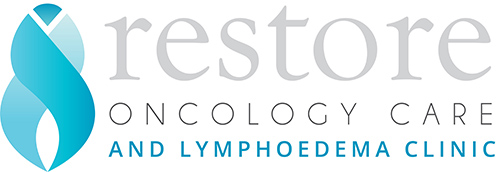Transcript
Hello my name is Sharyn. I’m an accredited lymphoedema practitioner and I’m making this video today about lymphoedema.
With everybody social distancing and in isolation, you might be going through breast cancer treatment and it’s very difficult to get in to see the health care providers that you need while you’re going through this. So, this video is going to be about lymphoedema to try and give you the information that you need to help arm yourself with that information. The more you understand, the more aware you are, then the better equipped you are to handle what’s going on at the moment.
What is Lymphoedema?
So, just to start off with what is lymphoedema? And I’m talking about breast cancer related lymphoedema. If you’ve had surgery for breast cancer, you may have had some lymph nodes removed from under your armpit most likely. When that happens it means that you may experience some fluid building up in your arm or maybe even your breasts.
Why does fluid build up?
Now why does that happen? The lymphatic system is a made up of a whole lot of vessels that are in our body everywhere and what those vessels do is they carry the fluid along out of our limbs, out of our tissue towards our lymph nodes. When it gets to the lymph nodes, the lymph nodes drain the fluid taking out any viruses or bacteria. Your lymph nodes are part of your immune system. They then filter the fluid back into your circulation and your body then deals with it. It might urinate it out or it just carries on circulating through the body.
Why does Lymphoedema occur?
So, why does lymphoedema occur? If you have a lymphatic vessel that is draining fluid out of the arm and it comes up to the armpit and it can’t find its lymph node, because that lymph node has been removed, then that fluid is going to come back into the arm and try and find another pathway out. So, think about a busy highway, it’s congested, cars start diverting off that highway trying to find the back road or a side street to get on to another main road to try and find a pathway out. If they can’t, if that fluid can’t find another pathway out, it’s sort of hanging around in the arm or the breast for a bit longer and then what happens is the pathways that are working, they’re under more pressure, they start to get a bit fatigued. They might start to stiffen up. They become less able to move the fluid as well. So now we’re getting more fluid accumulating in the arm. So it is really important if you’ve had lymph nodes removed to think about what is your risk. So, what we know from the research is that women who’ve had five or more nodes removed, that puts you into a slightly higher risk category. If we add radiation therapy to that, so radiation in particular to the nodes and if you’re overweight, if you’re carrying a lot of extra weight that’s another risk category for lymphoedema.
Does everyone who has had lymph nodes removed get Lymphoedema?
So does everyone get lymphoedema who’s had lymph nodes removed? NO. So, as I said, the main risk categories are five or more lymph nodes. The more lymph nodes you have removed there is a higher chance that you might get lymphoedema but not everybody will. So, again it’s just about having that understanding about what it is, how it occurs what can you do to prevent it. So before we talk about prevention, what are the signs and symptoms that you might feel?
Signs and Symptoms
You might notice that your arm feels heavy, there might be a little bit of fluid accumulating in the arm but it goes down overnight, you get up in the morning it’s feeling better so you don’t think anything about it. You might have a look at the back of your hand and compare the veins, the tendons, can you see them as clearly in both hands, are both the same? If one you can’t quite see as clearly as the other, is that because there’s a bit of fluid there? Do your rings feel tight or if you’re wearing a shirt with elastic on it, does that elastic leave a mark on that arm compared to the other side? So, there’s some of the signs and the symptoms that you might feel. It often comes on gradually so you may not be aware of it. But that’s the key. We’ve got to get it early.
Is Lymphoedema preventable?
So can we prevent lymphoedema? So the good news is yes, we now have the technology that we can actually screen for lymphoedema which means we can pick up really early changes in fluid within the arm and if we see those changes we can treat it straight away and we prevent that progression of more involvement of further lymph vessels. However, again in this time you may not have access to that technology, your therapist may not have access to that technology so again it’s just about knowing the signs and symptoms if you feel any of those you get onto it as early as possible. So what can we do to help prevent it? The first thing is looking after your arm. Skin care, making sure you moisturize your arm every day. Your skin is the outside barrier to the world, so we want to keep that skin as healthy as possible. If you do get a cut or scratch then you’re going to treat that straightaway with antiseptic. Just try and settle it down, try to wear long sleeves if you’re a gardener, if you’re outside try not to get sunburned. You’re just protecting the skin really. We’re looking for anything that may create an inflammatory response in that arm or breast so you know if we got a cut and that got infected that would increase the inflammatory load on that arm which brings more fluid. So that’s what we’re looking for there.
What can we do to help?
We can exercise. We know that exercise is really important and can help prevent lymphoedema. When the muscles move and pump, that actually helps to pump the fluid out of the arm. So, you don’t want to not use your arm, you want to be sensible, you don’t want to go lifting a heavy mattress or doing something that could cause harm but you do need to use your arm and an individualised weights program, that your therapist can provide you, can be very beneficial in the prevention of lymphoedema. So, we’ve got skincare, we’ve got exercise, we’ve got massage. We can do lymphatic drainage. We know that that also really helps in the prevention but also the management of lymphoedema and if you want some more information on how to do that just touch base, send me an email and I’ll send you some videos on how to do self-massage of your arm or your breast. So, skin care, exercise, massage, and if you do have lymphoedema then we need to add compression to that. A medical compression sleeve again, your therapist would need to measure you up for that, however if you can’t get out, you can’t get to a therapist we can offer telehealth consultations where we can show you how to measure and then advise you what kind of garment sleeve is going to suit you best.
Summary
So, we’ve talked about who’s at risk, we’ve talked about signs and symptoms, we’ve talked about prevention and how to manage it. They are the main things that I wanted to cover today. As I said, it’s really important to be aware, not alarmed. The more information you have, the more you can start to work with what you need to and seek out help if you need to. So, I hope that has helped. If you have any questions then please get in touch. As I said we are offering telehealth. There’s a lot we can do via a teleconference call to assess you to see what’s happening and start to put in a program of management if you need it. Thank you.


No Comments